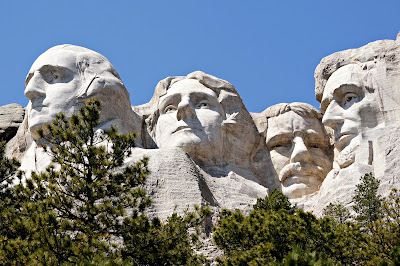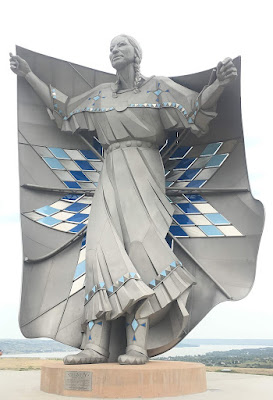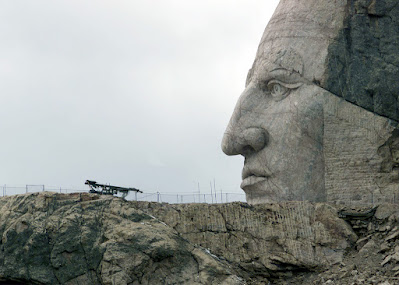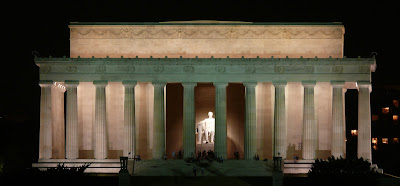 Photo by Mary Rayme
Photo by Mary Rayme
When we think about good health, we often think of good nutrition, sufficient sleep, and plenty of physical activity. While healthy food and regular workouts are essential to good physical and mental health, what we choose to look at and experience also greatly impacts our day-to-day health. To nourish your soul and psyche, I recommend a visit to an art museum. I realize that not everyone has access to a great art museum but if you do and have never visited an art museum, this article is meant to be a good place to start.Find a Museum Near You
Hopefully, you don’t have to go very far to find an art museum near you, most larger cities have one or two. Not all art museums are created equal. Do your research and determine whether the time, travel, and possible entrance fee is likely to be a positive experience. If modern art is not appealing to you, seek out a museum such as the Walters Art Museum, also in Baltimore. They have some 20th-century artworks but they also have a collection of antiquities such as reliquaries, illuminated manuscripts, Egyptian artwork, and Greek vases. Also for consideration, while many art museums have no admission fee they may charge for parking. Remember to set yourself up for a great visit to a museum.
Find an Artwork Friend
Find a painting, sculpture, drawing, or photograph that you feel deserves or needs more looking time. I know that when I walk through an art museum, not all artworks get careful scrutiny. My eye and body tend to linger in front of works that pull me in for one reason or another. Perhaps I am intrigued with the color, the way the brush strokes are applied, or the overall mood of a work. Let the art grab your attention and keep you longer.
When I visit the Baltimore Museum of Art I have a favorite painting of Mount Saint-Victoire by the French artist Paul Cezanne that I have to visit every time. Even though I have seen dozens of paintings by Cezanne on this subject matter, this painting never fails to pull me in for a good long look. This sustained observation of a beautiful work of art is for me both meditation and inspiration. My mind goes blank as my eye drifts slowly around this wonderful canvas, and I take in those powerful and brief brushstrokes as well as the blank white spaces that Cezanne chose to keep paintless. My breathing slows and I can feel my blood pressure lowering almost immediately, no prescription drugs are necessary. I am transported in time as well and try to imagine the cranky master, Paul Cezanne, outside painting this mountain in France in all kinds of weather.
You may want to perform an art museum recon mission of walking through an entire floor quickly, and then deciding where you want to spend your quality looking and seeing time. Better yet, get a map or ask at the information desk about the floor plan of the museum. On a recent visit to the Staatsgalerie in Stuttgart, we were greeted by a very knowledgeable docent who asked us what we wanted to see. I knew that I was in a large world-class museum and knew that I did not want to fast walk through the whole museum to cram all its art goodies down my throat in a couple of hours. I was more interested in seeing more contemporary art than old art so the docent pointed us in the direction of 20th-century art. We did have a map but having an actual conversation with a real person was so much more pleasant than trying to read a map. The next time I return, I will see the older artwork and then return to the highlights of the contemporary art collection.
Below are some tips to help you make the most of your museum experience:
- Wear comfortable shoes when you go to an art museum, as these buildings tend to have floors that are made of cement and marble. Do not wear flip-flops. Do have arch support. The physical activity of walking from gallery to gallery and perhaps up and down stairs is part of the journey through the art museum– physical activity adds points to your mental health too.
- If you have accessibility issues I recommend calling ahead to figure out what your options are and how much of the museum is wheelchair accessible and/or Americans with Disabilities Act (ADA) compliant. I would also ask if disability parking spaces are available to museum visitors.
- If you have wiggle room in your schedule, I recommend that you choose a time to visit the museum that is less crowded on a weekday morning perhaps.
- If at all possible, travel lightly. Many art museums have lockers where you may stash your stuff, but this requires an extra step. On a recent art museum visit, I accidentally tried to carry in a water bottle and was told I needed to get a locker downstairs which was just fine– I am willing to sacrifice the comfort of my water bottle for security. Museums have rules. They also have amazing art. To enter and look you need to abide by the rules.
- You are not required to like or respond to everything you see in an art museum. I would challenge any art museum visitor to at least question why they like or dislike a work of art. Even better, have a conversation about it with your museum buddy.
- Get a museum buddy! I love going to an art museum alone but I also love going with another devotee of art history. Get lunch with your museum buddy while you are there and catch up only each others life.
- Many museums these days are free, offer significant discounts to students and senior citizens, or have cost-saving membership packages.
- Don’t touch the artwork! Seriously. If every visitor touched artworks they would fall apart from skin oils alone.
- Be observant of any barriers in front of works of art. There art some large canvases at the National Museum of Art in Washington DC at the Smithsonian that have alarms that go off if you get too close. This is to protect the artwork.
- If there is no barrier, it is acceptable to get up fairly close to a painting or sculpture to observe and appreciate finer details. Many art museum-goers may perform an observational dance of looking at a painting from far away and then diving in to get a closer look. Be aware of others who may be doing the same dance to avoid crowding others or bumping elbows.
- Be sensitive to what you see and what brings you pleasure or fulfillment. If good art is good for you, bad art can also have a detrimental effect. (You know that feeling you get when you watch too much TV or eat too much junk food? Same deal.)
- Consider having a coffee, snack, or meal in the art museum restaurant to break up the walking and to have a small rest. If you are with a family or group, consider starting a discussion by asking everyone to name their favorite artwork that they have seen so far and why.
- Check out the gift shop. Really. I really love browsing a good art museum gift shop and have sometimes purchased items such as art postcards, jewelry, or art supplies. The Baltimore Museum of Art gift shop is outstanding and I just adore their selection of items that give it a local, Baltimore feel. In many museums, you do not have to pay an entrance fee to shop at the gift shop.
- Many art museums have photography restrictions. If you plan on photographing any of the artworks in the museum you need to observe the photo restrictions. Most museums do not allow flash photography as the light degrades the artwork.
- Be respectful of the museum guards-- they work hard to keep the art safe and to answer directional and wayfinding questions. The last time I visited the Baltimore Museum of Art, a security guard lead me to a painting that I have to visit every time, The Sorrowing Soul Between Doubt and Faith by Elihu Vedder. I like the idea of the responsibility of the museum guards overlapping with the docents. Don’t look too long at art. Just as too much good food can make you ill, looking at art for longer than two hours or so is visually exhausting, so don’t overdo it. I personally am visually exhausted, overstimulated, and a bit giddy at the end of a good museum visit.
I am often left inspired and uplifted by a visit to an art museum. Each work of art is a message from a fellow human left just for me, the viewer. I like to write down the names of artists I have never heard of but would like to know more about. The artists and paintings I am familiar with already greet me like old friends. If you need proof that a museum visit is good for your health you can read about several studies that provide evidence that this may be true. So get up, go out and visit an art museum and see if this experience has a positive impact on your mental health.


.jpg)



























